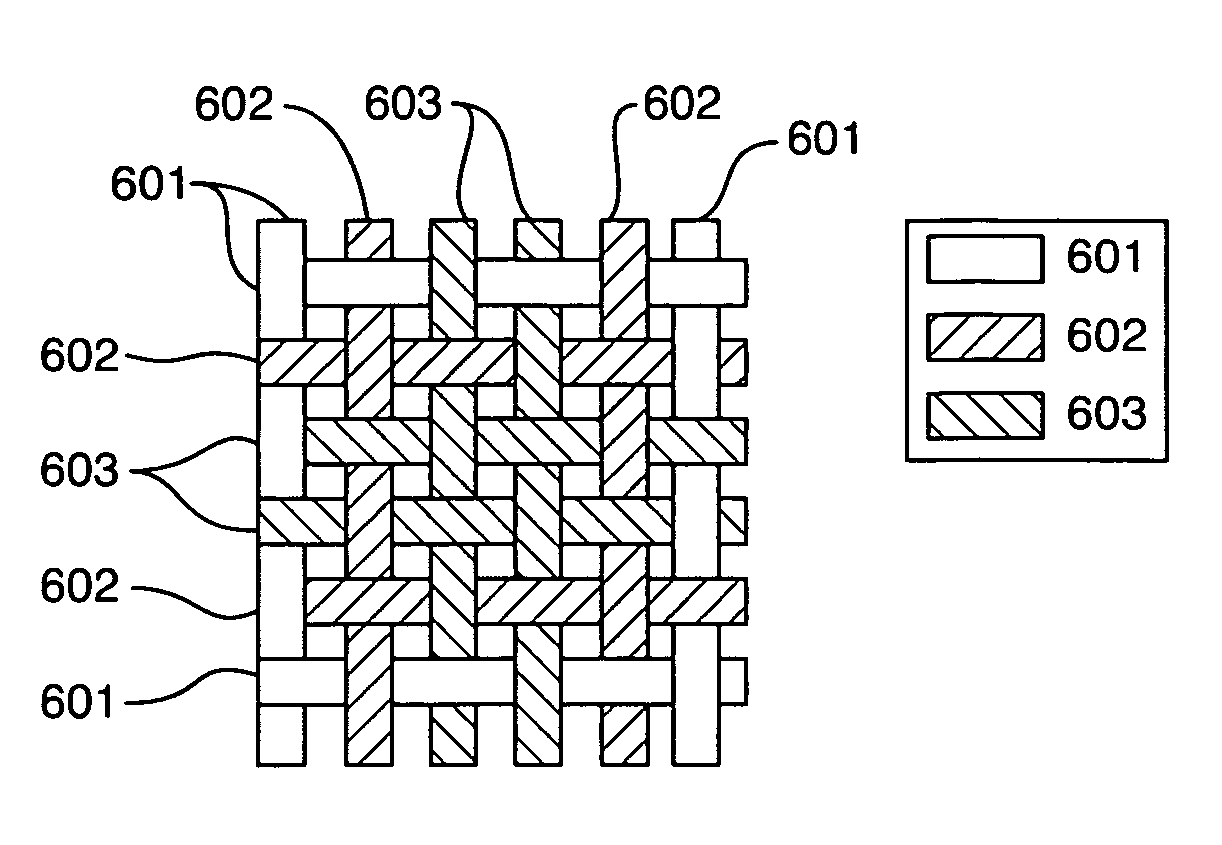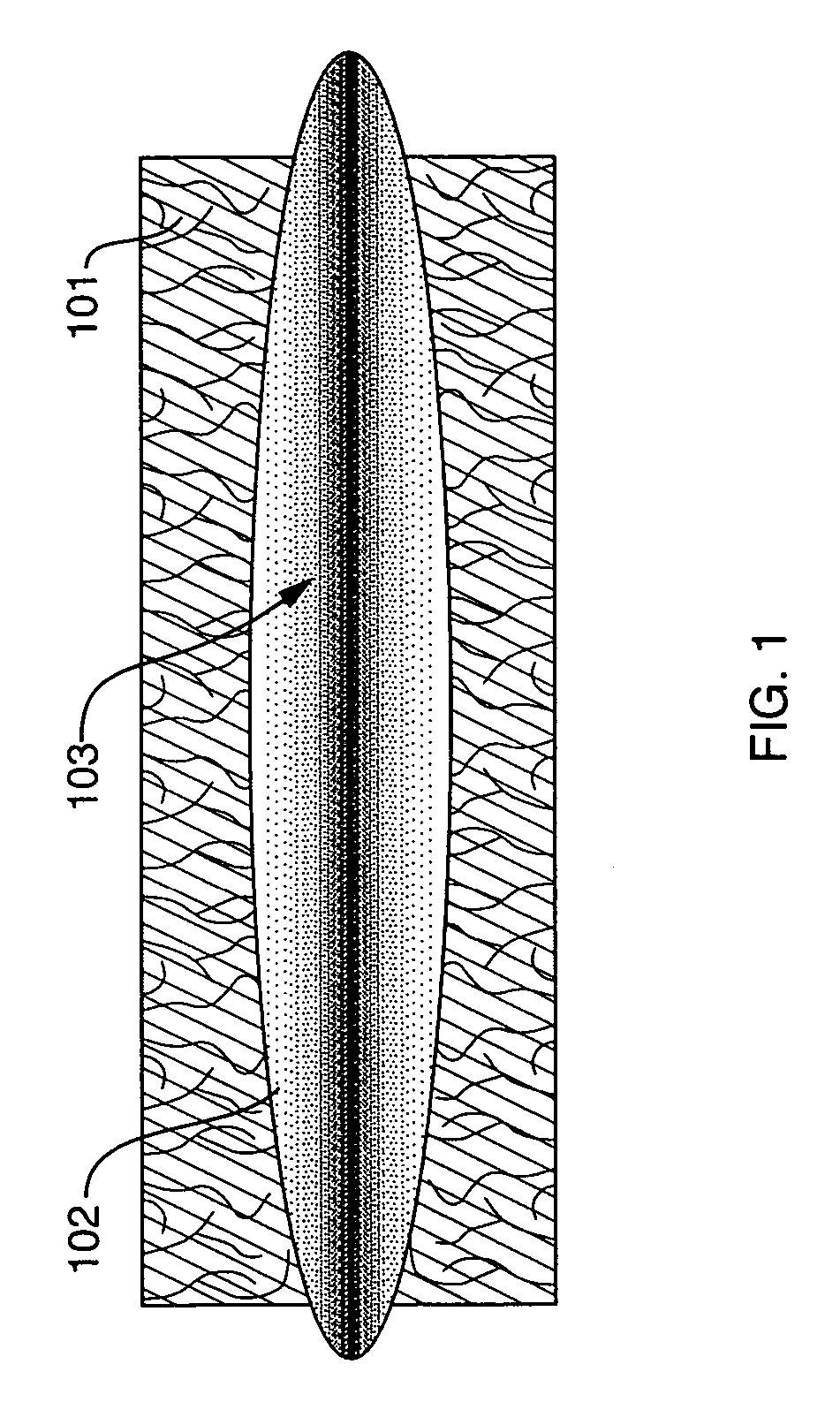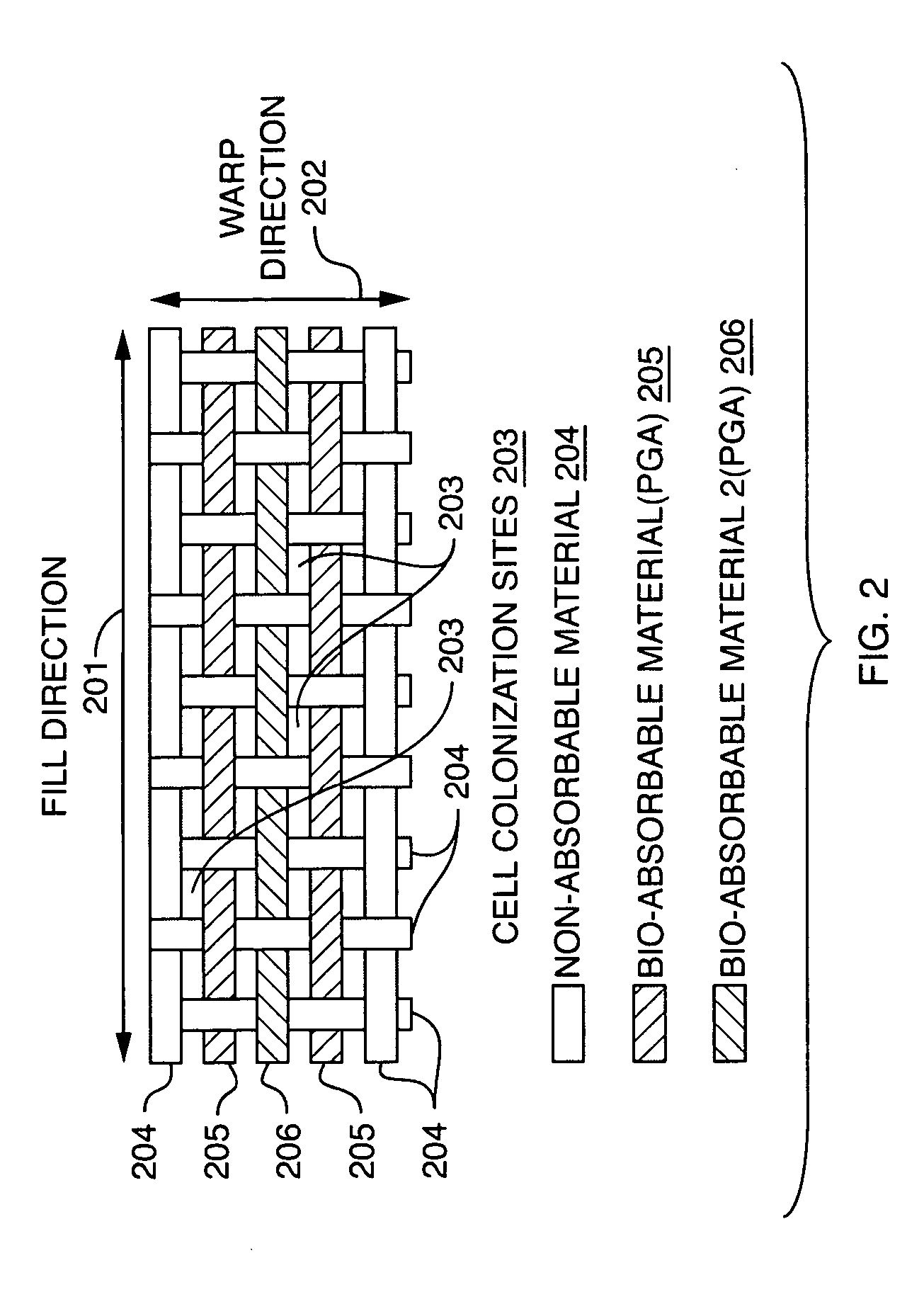Controlled absorption biograft material for autologous tissue support
a biograft material and autologous tissue technology, applied in microbiology, medical science, surgery, etc., can solve the problems of affecting the competence of the graft, the pathology of the tissue interaction with the pet is not constructive to the operation of the graft material,
- Summary
- Abstract
- Description
- Claims
- Application Information
AI Technical Summary
Benefits of technology
Problems solved by technology
Method used
Image
Examples
Embodiment Construction
[0022] This invention substitutes some of the inert fiber in graft structures with bio-absorbable fiber. The woven structure is woven so that absorption rates of bio-absorbable material approximate the tissue regeneration rate during the post-operative healing process. Using the example of a vascular graft, these two processes operate as follows. The endothelial and fibroblasts begin to populate the surface of the graft. This process is more pronounced at the interface with the autologous tissue. As the tissue remodeling takes place bio-absorbable fiber is being broken down, at an approximately matched rate of tissue remodeling, in the graft. As void spaces are created through interstice degradation, the autologous tissue populates these voids.
[0023] Because the regenerative process of tissue remodeling is slow, the structural integrity of the graft must be maintained by a second matrix of non-absorbable fiber. In the case of the vascular graft this second matrix can be of PET or o...
PUM
 Login to View More
Login to View More Abstract
Description
Claims
Application Information
 Login to View More
Login to View More - R&D
- Intellectual Property
- Life Sciences
- Materials
- Tech Scout
- Unparalleled Data Quality
- Higher Quality Content
- 60% Fewer Hallucinations
Browse by: Latest US Patents, China's latest patents, Technical Efficacy Thesaurus, Application Domain, Technology Topic, Popular Technical Reports.
© 2025 PatSnap. All rights reserved.Legal|Privacy policy|Modern Slavery Act Transparency Statement|Sitemap|About US| Contact US: help@patsnap.com



